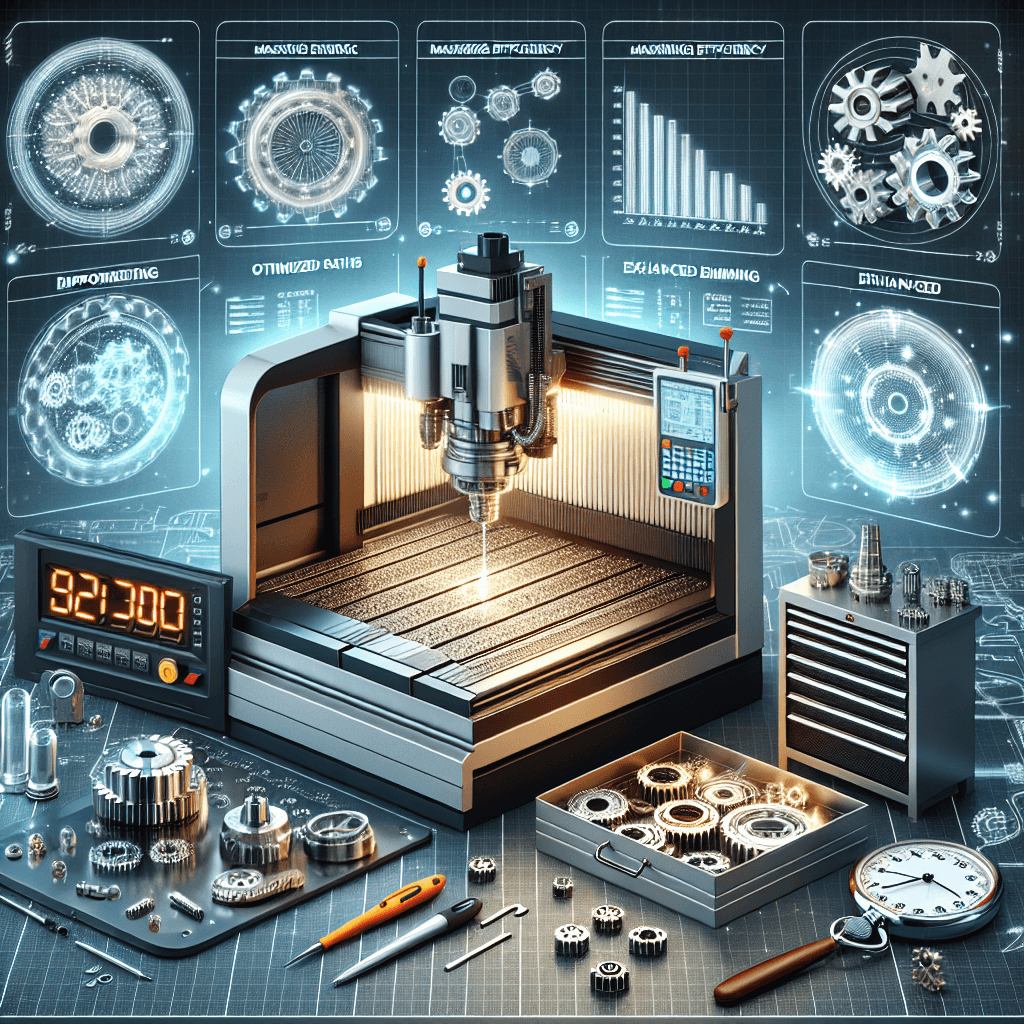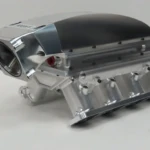CNC machining has revolutionized manufacturing, embodying precision, consistency and efficiency in the production process. As global markets become increasingly competitive, manufacturers must optimize every aspect of their operations. This comprehensive guide delves into maximizing efficiency in CNC machining practices, providing you with science-based techniques, innovative strategies, and expert insights.
Understand CNC machining efficiency
What is CNC machining?
CNC (Computerized Numerical Control) machining is a process in which computers control machine movements, thereby automating precision cutting, drilling and shaping of materials. This digital approach translates designs into physical components with unparalleled accuracy.
The importance of efficiency
In the world of CNC machining, efficiency isn’t just a buzzword; it’s a concept. It is a key factor affecting production costs, turnaround times and overall customer satisfaction. Efficient processing not only maximizes resource utilization, but also improves output quality, reduces waste and increases profitability.
Key factors affecting CNC machining efficiency
1. Machine selection
Choosing the right CNC machine tool is the basis for achieving efficient machining operations. Factors to consider include:
- Type of processing required: Whether milling, turning or grinding, the capabilities of the machine tool should be matched to the specific application.
- Material: Different machines can handle a variety of materials better, including metals, plastics and composites.
- Accuracy requirements: High-precision applications require machines with tight tolerances.
2. Tool Strategy
Tool selection and management are critical to CNC machining efficiency. Effective tool strategies include:
- Long tool life: Choose tools with high wear resistance to minimize downtime.
- Best tool path: Reducing the length of tool paths saves time and increases efficiency.
- Cutting speed and feed: Implementing the correct speeds and feeds according to material specifications can significantly increase productivity.
3. Workpiece clamping method
Proper workpiece clamping is critical to maintaining consistent part quality. Techniques for optimizing workholding include:
- Jig design: Customized jigs that securely hold parts can improve machining efficiency.
- Vice and clamp selection: Choosing vises and clamps that fit the part geometry can prevent workpiece distortion.
- Quick change system: Implementing a quick-change system can significantly reduce setup time between jobs.
4. Software integration
CNC machining is not complete without powerful software solutions. Advanced software provides productivity-enhancing features, including:
- Computer Aided Design/Computer Aided Manufacturing: Promote efficient design-to-manufacturing workflow by integrating CAD (computer-aided design) with CAM (computer-aided manufacturing) systems.
- Simulation tools: Virtual simulation can identify potential bottlenecks before actual machining begins.
- Real-time monitoring: IoT-enabled devices and software solutions can track machine performance in real-time, immediately identifying areas for improvement.
5. Scheduling and workflow optimization
Efficient scheduling and workflow management optimize productivity. Best practices include:
- Work priorities: Evaluating jobs based on factors such as deadlines and resource availability can maximize throughput.
- Lean Manufacturing Principles: Implementing lean principles minimizes waste, increases efficiency and promotes continuous improvement.
- Flexible machining practices: Adopt a flexible approach that can quickly adjust according to market demand or production needs.
6. Quality Assurance
Prioritizing quality assurance throughout the machining process helps reduce rework and waste, thereby increasing efficiency. Effective quality assurance techniques include:
- Statistical Process Control (SPC): Implementing SPC technology provides real-time quality monitoring, helping to identify problems before they escalate.
- Process inspection: Regular inspection of parts during processing can eliminate inferior products.
- feedback loop: Establishing feedback mechanisms facilitates continuous improvement based on quality data.
Advanced technology to improve efficiency
1. Implement automation
Automating CNC machining can significantly improve efficiency. Options include:
- Loading and unloading robot: Robotic systems can handle material loading/unloading, significantly reducing cycle times.
- Automatic tool changer: These systems automate the process of changing tools, making long machining runs more efficient.
- mass production: Producing parts in batches simplifies operations and reduces setup time.
2. Energy efficiency
An often overlooked aspect of processing efficiency is energy consumption. Strategies to improve energy efficiency include:
- Optimize energy use: Adopting energy-efficient machines and practices can reduce operating costs.
- HVAC Considerations: Ensuring proper climate control in a machine environment can prevent equipment overheating and resulting downtime.
- Regular maintenance: Regular equipment maintenance helps maintain efficient energy consumption levels.
3. Employee training and engagement
Investing in workforce training can improve overall efficiency. Areas to focus on include:
- CNC programming skills: Training employees in advanced programming techniques can increase machine utilization.
- solve problems: A culture that encourages problem-solving enables employees to identify inefficiencies and take action.
- safety training: Ensuring a safe working environment prevents accidents and resulting production shutdowns.
4. Continuous improvement culture
To maintain and improve efficiency over the long term, it is critical to develop a culture of continuous improvement. Technologies include:
- kaizen activities: Regular Kaizen activities emphasize incremental improvements.
- performance indicators: Implement key performance indicators (KPIs) to monitor process performance.
- employee involvement: Encourage employees to suggest process improvements and develop a sense of ownership.
in conclusion
Maximizing CNC machining efficiency involves more than just optimizing a single aspect of your operation; it involves optimizing every aspect of your operation. This is a comprehensive approach that requires strategic consideration of multiple factors. By selecting the right equipment, implementing an effective tooling strategy, optimizing workflows, leveraging automation, and cultivating a culture of continuous improvement, organizations can harness the full potential of CNC machining. As technology continues to evolve, staying ahead of the curve requires being open to new methods and practices, prioritizing efficiency in a rapidly changing manufacturing environment.
FAQ section
Q1: What is CNC machining?
CNC machining is an automated process that uses computer systems to control machine tools to manufacture parts with high precision and consistency.
Q2: Why is efficiency important in CNC machining?
Efficiency reduces production costs, improves output quality, shortens delivery times, and increases overall customer satisfaction.
Q3: What are the key factors that affect CNC machining efficiency?
Factors include machine selection, tooling strategies, workholding methods, software integration, workflow optimization and quality assurance practices.
Q4: How does automation improve CNC machining efficiency?
Automation reduces cycle times, enhances production capabilities, minimizes human error and streamlines operations.
Q5: What effect does employee training have on CNC machining efficiency?
Employee training improves skills, facilitates problem solving, ensures safety, and empowers employees to proactively identify and resolve inefficiencies.
Q6: How to ensure the quality of CNC processing?
Implementing statistical process control, conducting process inspections, and establishing feedback loops can significantly enhance quality assurance.
By integrating these strategies, manufacturers can not only maximize efficiency but also ensure that their CNC machining operations remain competitive in today’s dynamic marketplace.
Daguang focuses on providing solutions such as precision CNC machining services (3-axis, 4-axis, 5-axis machining), CNC milling, 3D printing and rapid prototyping services.










































